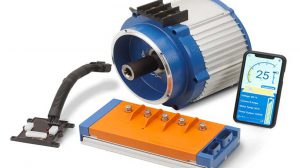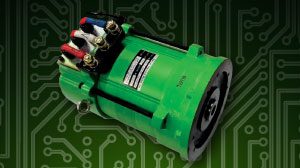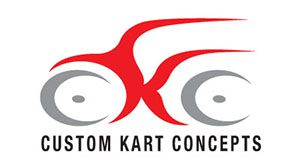Question: PA in Minnesota writes; I hear a lot about POTS, ITS, V-glide and all sorts of values, tell me what all that means?
According to Roger: What is meant by those short terms is “throttle inputs”. Car manufacturers use different inputs as part of what they feel best suits a control system they wish to use. Accelerator, linkage and location on the car can play part of why a particular throttle input is used. Pricing and Controller can play a part as to what input the manufacturer may use. So it is not some sort of part that is pulled off the shelf and put on a car (without thought going into it). Going one step further, we call the whole assembly an accelerator.
One POT (potentiometer) that is used and is most common through the years is a rotated shaft that moves across a carbon trace either in a clockwise or counter clock wise rotation. Most common resistance on this type of POT is a 0 to 5K or 5K to 0 wipe. Wipe just means the movement from beginning point to ending point based on accelerator pedal depression. A POT can have many resistance values so you must look at the manufacturers specifications to determine the POT value for the car it is being used on. So you can think of this type of POT as being a variable resistor that is mechanically activated.
ITS (Inductive Throttle Sensor) just means it is a voltage controlled input. Again, with this type you have to know the manufacturers voltage inputs before testing. There are different configurations of this Sensor so do not be fooled by how it looks. An Inductive Sensor does the same thing as a POT, except it uses voltage variances to change the speed of the car.
V-Glide (multi-step pot) is just another form of a resistive wipe (similar to a POT) but uses a set of resistors in series and uses a carbon based brush and copper contacts to vary a step by step resistor alignment for car speed. Again it can be either a 5K to 0 or 0 to 5K wipe. Some are a 2 wire circuit and some or a 3 wire circuit. The third wire on some systems is used to supply a negative to the assembly. Again, you must know what the manufacturer of the car is using.
Testing and trouble shooting POTS or ITS is just a matter of knowing value and having a VOM to test with. Purchase a good quality VOM (Volt/Ohmmeter) that has DC voltage ranges of 20 to 200 volts (DC). Resistances ranges of 200, 2000, 20K and 200K ranges (digital meters). Digital is a little easier to use than Analog but that is your choice. Just make sure the Analog meter has an RX100 scale. Some POTS are very difficult to connect to so it is advised purchasing a set of self penetrating clips as well. As the car market changes you will see more and more of a need for self penetrating test lead clips.
Having the correct input to a controller is very important. The logics of a controller can only operate based on the input it sees. As an example a customer may have a controller using a 7K to 1K POT input. A controller is mounted on a car that uses a 5K to 0 POT. The controller will sense that 5K potential and shut the car down. This is called high pedal detect and is a safety feature built into a controller. At 5K the controller sees a partial throttle condition (40% on). This particular controller has to see 6K to 7K for the controller logics to perform. Otherwise the system is shut down. We see this continually on our tech lines and returns. The market has produced many brands of controllers for speed and torque applications. This has expanded into a lot of stock control systems to speed and torque replacements. Doing so does create problems for technicians that did not do the installation. The installer sometimes may change a POT input to match whatever controller he may have in stock to get the install completed. So do not trust what was done before you as sometimes what the manufacturer actually put into the car may not be there now. This has become quite common so pay close attention to exactly what system is being used in the car. Test first, and than order is my suggestion for getting the correct part you may need to order. Freight back and forth in todays world can be expensive. If you need further assistance feel free to email me for testing procedures for your car.











